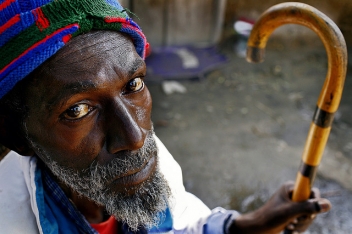 How often have you heard that ageing isn’t a problem in the developing world because “life expectancy is below 50”?
How often have you heard that ageing isn’t a problem in the developing world because “life expectancy is below 50”?
This arises from a basic misunderstanding of the meaning of “life expectancy”, a misunderstanding which can be responsible for spreading a very damaging myth.
For example, in an otherwise excellent article on population change, which appeared in the International Herald Tribute in 2002, the journalist Barbara Crossette said the following:
“As births fall and lives are extended, the global population is getting older… But not everywhere. For example the United Nations calculates that life expectancy at birth is being slashed in countries hardest hit by AIDS.”
So far so good. Then she says:
“In South Africa, the life of a baby should be 66 years; AIDS has cut that to 47. In Zimbabwe the drop has been to 43 years from 69. In Botswana, it is 36 years, down from 70 years.”
The myth of life expectancy
This is the myth of life expectancy, which goes as follows:
Higher mortality due to HIV and AIDS is cutting the life expectancy at birth in many countries, in sub-Saharan Africa. This is true.
However, the conclusion drawn is that a baby born in, for example, South Africa today will only live to be 51. Everybody over 51 will be living on “borrowed time” (Jerry Rawlings, ex-President of Ghana used this phrase to describe himself and other Africans in their 50s). This is not true.
Other aspects of the myth include the idea that falling life expectancy at birth will mean that there will be no or (at best) fewer older people in Africa in the coming decades. This is not true.
The facts about life expectancy
There will be more older Africans over the coming century. In 2010 there were already more older Africans than older people in western Europe. By 2050 there will be between two and three times more Africans than western Europeans aged over 60.
Why is this?
Despite HIV and AIDS, which is both a massive health challenge and a personal tragedy for each infected/affected person, the momentum of population ageing will not stop. For example:
In Africa today there are about 40 million people in their early 30s. Even if a quarter or more of this age group die prematurely, nearly 30 million will survive into their early 60s. So by 2030, the number of Africans entering old age will be over 50% higher than today.
Another version of the myth comes from a quite different context. Russia today has a crisis of premature male deaths. In an article headlined “No country for old men”, Guardian journalist Luke Harding described what this means in remote rural communities:
“The average male life expectancy in Russia is just 59. Now thousands of ‘ghost villages’ contain fewer than 10 people, most of them elderly women… The figure is well below life expectancy in western Europe and in many developing countries as well.”
The article gives an excellent and moving description of the early deaths of thousands of men, with alcoholism playing a major role. However, Harding then slips from fact to myth by saying: “Despite a tiny recent improvement, Russian men continue to die before old age.”
While it may make good journalism, this doesn’t accord with the facts. There are nearly nine million Russian men over 60 today. Certainly this is hugely smaller than the number of older women (which is over 16 million), but it is also far from the picture of a country without older men.
Challenging preconceptions and falsehoods
So don’t allow people this life expectancy myth to go unchallenged! Life expectancy is only a measurement, not a prediction. It is only an average across a whole population, not a maximum for each individual.
Life expectancy at birth is hugely affected by deaths of babies and young children up to five years. Therefore, if we calculate life expectancy at five or 15 years of age it rises dramatically.
This is the case despite the impact of HIV and AIDS. Other major disasters, wars and so on have not significantly altered the momentum of population ageing.
The 20th century saw more deaths from wars than any previous era of human history, but it was also the era of most rapid population ageing.
References:
World Bank Development Indicators 2008. Updated from the figure quoted in the IHT article above.
Population Division of the Department of Economic and Social Affairs of the United Nations Secretariat, World Population Prospects: The 2008 Revision
UN AIDS 2008 “Report on the Global AIDS Epidemic”: in three southern African countries the national adult HIV prevalence rate now exceeds 20%. These countries are Botswana (23.9%), Lesotho (23.2%) and Swaziland (26.1%).
Population Division of the Department of Economic and Social Affairs of the United Nations Secretariat, World Population Prospects: The 2008 Revision
UN DESA (Department of Economic and Social Affairs, Population Division) Population Ageing and development Wallchart 2009.
